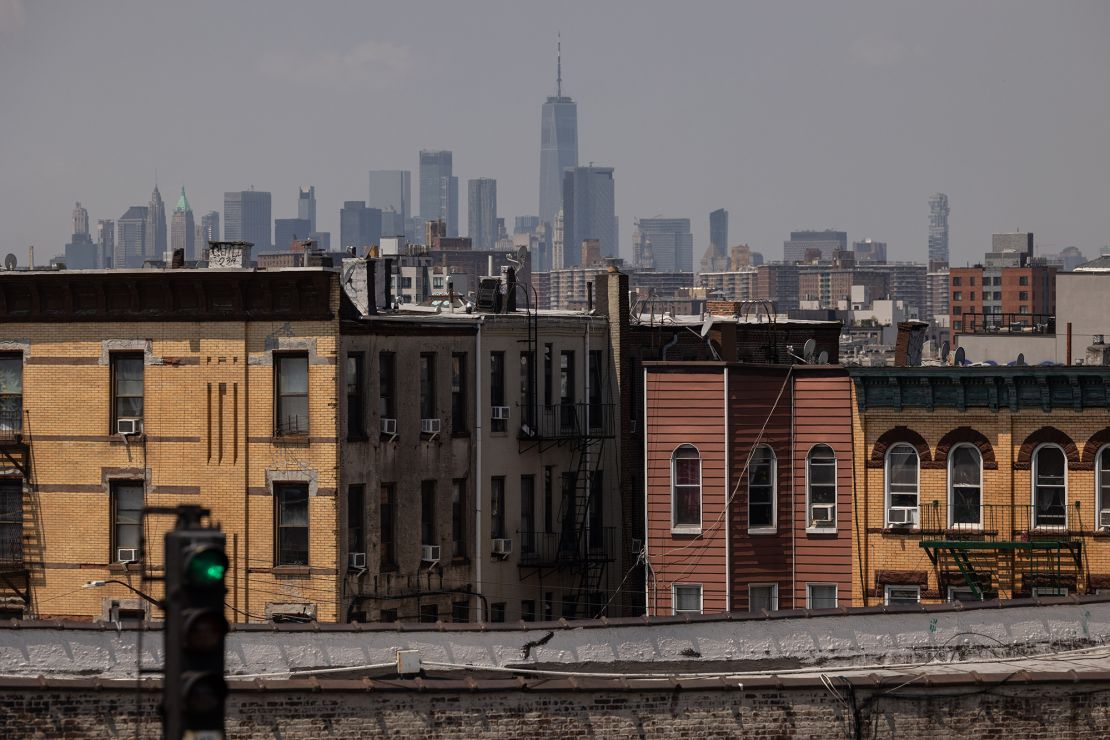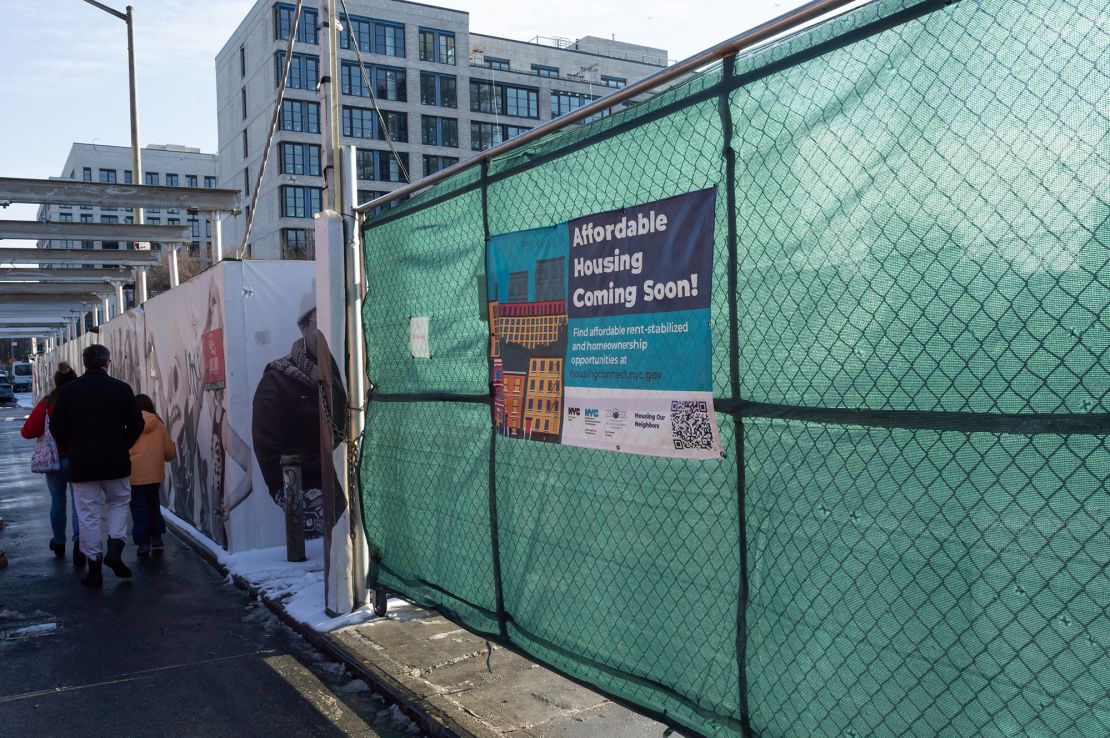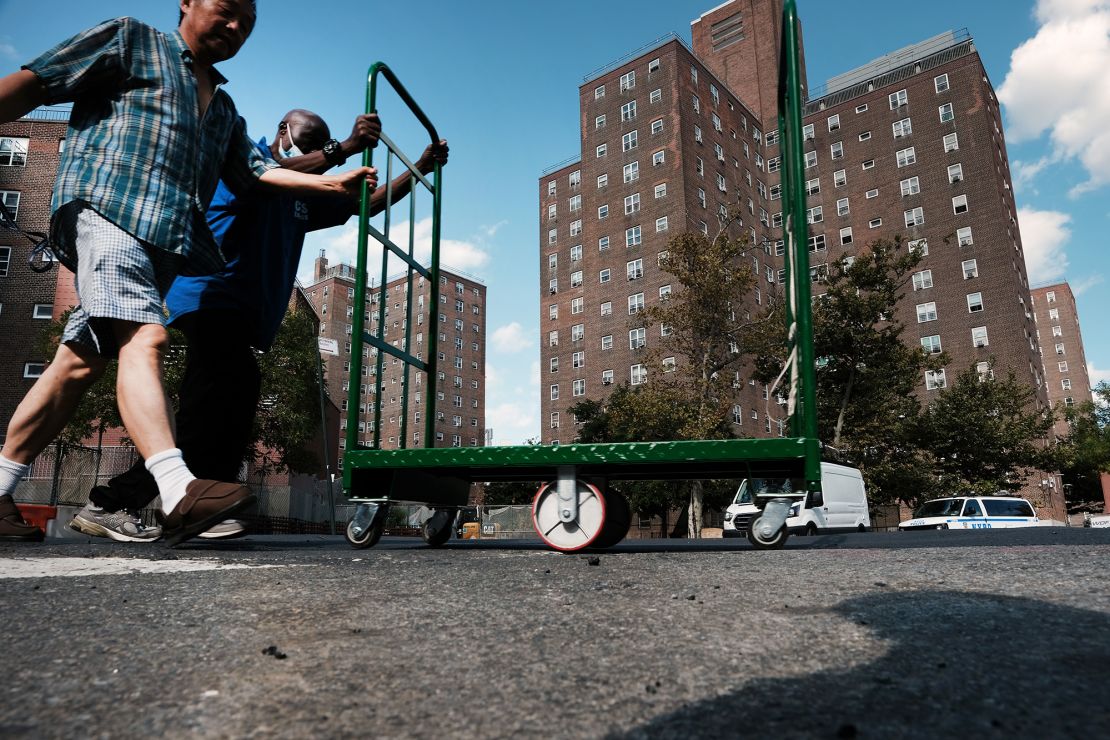New York
CNN
—
New York City frontrunner for mayor Zohran Mamdani has an ambitious agenda to tackle the city’s housing crisis. But the spiraling costs to develop affordable housing, President Donald Trump’s efforts to gut federal housing aid and other obstacles may derail his goals.
New York City is in the grips of its worst housing shortage in more than 50 years. Only 1.4% of apartment rentals are available, and the typical New York City household pays more than half of its $70,000 income on rent.
The city’s leaders for decades have promised new affordable housing. Mamdani, who won New York City’s Democratic mayoral primary, has pledged to freeze rents on rent-stabilized units if elected; build 200,000 permanently affordable apartments over the next decade; and double the amount of money the city spends to preserve public housing. Mamdani’s campaign did not respond to CNN’s request for more details on his plans.
“We need significantly more affordable housing,” the campaign says on its website. “Housing that does get built is often out of reach for working families who need it the most.”
But affordable housing development is devilishly complicated and requires deep government subsidies to make units affordable to low-income tenants. And many affordable housing owners and the New York City Housing Authority (NYCHA) are already behind on their bills.
“The rubber is going to meet the road” on Mamdani’s housing policies, said Howard Slatkin, the executive director of the Citizens Housing & Planning Council, a non-profit research organization. “It’s hard to talk about these plans without talking about the simmering distress within New York City’s affordable housing.”
Since 2020, expenses for rent-regulated apartments have increased 22% per unit, according to data from the Community Preservation Corporation, a non-profit affordable housing lender. Rising costs for utilities, insurance and construction make it harder to keep the current stock of affordable housing in good condition or build new units.
Plus, the Trump administration has proposed cutting federal rental assistance by 40%. This would devastate housing affordability in New York City, said Barika Williams, the executive director of ANHD, an organization of New York non-profit housing providers.
“What’s happening at the federal level is our greatest threat to putting together a robust housing development plan for New York,” she said.
If elected, Mamdani can likely fulfill his pledge to freeze rents for roughly 1 million rent-stabilized units — almost half of New York City’s rentals. But there may be unintended consequences from the plan.
The mayor appoints members to the Rent Guidelines Board that sets annual rent increases on stabilized units. The board froze rents three times over the last decade.
The board on Monday approved rent increases on new leases beginning in October, a move Mamdani criticized as a “blow to struggling rent-stabilized tenants.”
But like tenants, affordable housing owners are also dealing with higher costs.
Expenses for rent-regulated units are rising twice as fast as owners’ revenues, according to the Community Preservation Corporation. Nearly one-third of the loans in its portfolio are buildings that don’t have sufficient net operating income — income minus operating expenses — to fully cover mortgage payments. Eight percent of loans were delinquent.

So experts warn that any rent freeze without financial support for smaller owners will lead to apartments falling into disrepair — especially fully rent-stabilized buildings in New York City’s outer boroughs. Buildings built before 1974 outside of central Manhattan, a crucial part of the city’s affordable supply, saw net operating incomes fall 13.1% from 2021 to 2023.
“There is a real need to freeze or minimize rent increases, and we also need to invest in the preservation and stability of our existing affordable housing stock,” said Williams. “It can’t be an either-or conversation.”
Mamdani’s rent freeze plan could undermine his goal of building 200,000 publicly subsidized, rent-stabilized, permanently affordable homes over the next decade for low-income households and seniors.
That’s because the private sector may be dissuaded from participating if these buildings don’t include market-rate housing. The private sector has a “very important role” to play in building housing, Mamdani has said.
“A rent freeze will change how a conversion might pay off for the developer,” said David Reiss, a law professor at Cornell University who served on the Rent Guidelines Board under Mayor Bill de Blasio.
And to be permanently affordable for extremely low-income renters, it will require deeper government subsidies than Mamdani has pledged, experts say. Previous New York City mayors have attempted to produce housing for a wide range of incomes to help offset higher subsidies for deeply-affordable units.

“It’s in the right direction to focus on people with the greatest affordability challenges,” said Alex Schwartz, an urban policy professor at The New School and a current member of the Rent Guidelines Board. “It’s important to recognize that the capital dollars won’t go as far in terms of total numbers of units if they only go toward people with extremely low incomes.”
Mamdani wants the city to borrow $70 billion to build affordable housing over the next decade, on top of the roughly $25 billion it already plans to invest.
That’s no easy task – he will need state approval since the plan would exceed the city’s debt limit by around $30 billion, as well as the New York City Council’s approval of zoning reforms that would make it easier to build.
“This would be a significant increase in city capital to produce deeply affordable housing,” said Rachel Fee, the executive director of the New York City Housing Conference, a non-profit affordable housing policy and advocacy organization. “It’s not something he can just implement on his own. It will take a political coalition to make this happen.”
NYCHA, the largest and oldest public housing agency in the United States, has more than 177,000 apartments. But for decades, a decline in federal funding for public housing has caused living conditions to deteriorate.
Mamdani plans to double the city’s capital investment in NYCHA for long-term repairs. New York City plans to spend $1.27 billion in its next fiscal year on improvements, but that’s nowhere near the roughly $80 billion NYCHA has estimated it needs to fully rehabilitate all of its buildings.
The city has made progress renovating thousands of public housing developments through a program that converts units into a more stable federal funding source.
But federal funding may soon dry up.

New York City relies heavily on federal assistance for housing. But Trump’s budget for next year calls for slashing Housing and Urban Development funding by nearly 44%, including cuts to grants for homelessness and community development programs and other rental assistance.
New York would lose more than $4.4 billion in funding if Congress enacts the budget, according to New York Housing Conference projections. That would be on top of HUD staffing cuts and resignations that have depleted the agency under Trump.
Mamdani has not said how his housing plan would reckon with the possibility of huge federal cuts to public housing.
“Public housing is area where we’d like to see more details from Mamdani’s campaign,” said New York Housing Conference executive director Fee. “Trump’s plan would be a huge threat to achieving any of these goals.”

